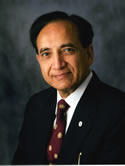Risk of carcinoma in pleomorphic adenomas of the parotid Journal Article
| Authors: | Levyn, H.; Subramanian, T.; Eagan, A.; Katabi, N.; Lin, O.; Badillo, N. D.; Martinez, G.; Scholfield, D. W.; Wong, R. J.; Shah, J. P.; Givi, B.; Morris, L. G. T.; Ganly, I.; Patel, S. G. |
| Article Title: | Risk of carcinoma in pleomorphic adenomas of the parotid |
| Abstract: | Importance: Surgery is the mainstay of treatment for pleomorphic adenomas (PAs) of the parotid to prevent further growth and potential future malignant transformation. While historical case series have reported transformation rates as high as 10%, there is a lack of contemporary methodologically sound data. Objective: To examine the rate of carcinoma ex pleomorphic adenoma (CXPA) detection in untreated PAs and investigate factors associated with malignant neoplasm. Design, Setting, and Participants: This cohort study reviewed all cases of primary PAs managed at a quaternary referral center between December 1990 and January 2015. Patients whose clinical presentation was compatible with a primary benign PA and whose history indicated tumor duration of over 1 year were included. Data were analyzed from January to April 2023. Exposure: Untreated PA. Main Outcomes and Measures: Rate of CXPA detection among untreated PAs and association of tumor duration with rates of CXPA detection. Pathology slides of patients who underwent surgery were reviewed by a single expert pathologist for the presence of CXPA. Univariable logistic regression was performed to evaluate possible factors associated with CXPA. Results: A total of 260 patients (median age, 47 years [IQR, 38-60 years]; 174 [66.9%] female) had a median tumor duration of 3.2 years (range, 1-30 years; mean [SD], 5.7 [5.5] years). Patients were divided into 4 groups by tumor duration: 1 to 4 years (158 [60.7%]), 5 to 9 years (47 [18.1%]), 10 to 14 years (27 [10.4%]), and 15 to 30 years (28 [10.8%]). In 156 of 170 patients who underwent preoperative fine-needle aspiration (91.8%), a benign tumor was diagnosed; 5 of these patients (3.2%; 95% CI, 1.4%-7.3%) were later diagnosed with CXPA on pathology after eventual excision, and the rate of high grade CXPA was 1.3%. None of the patients had permanent facial nerve paralysis. Tumor size at presentation (odds ratio [OR], 1.66; 95% CI, 1.22-2.24) and incremental (per year) increase in age (OR, 1.04; 95% CI, 1.01-1.08) were found to be associated with CXPA, whereas tumor duration was not (OR, 1.00; 95% CI, 1.00-1.01). Conclusions and Relevance: In this study, the rate of malignant neoplasm detection among initially untreated PA was 3.2%. The results suggest that tumor size and older age are associated with the development of CXPA, while tumor duration is not. Observation of PA for longer periods was not associated with serious permanent complications. |
| Keywords: | middle aged; adenocarcinoma; cohort studies; cohort analysis; pathology; cell transformation, neoplastic; carcinoma; salivary gland tumor; salivary gland neoplasms; parotid neoplasms; pleomorphic adenoma; adenoma, pleomorphic; parotid gland tumor; humans; human; male; female; neoplastic cell transformation |
| Journal Title: | JAMA Otolaryngology - Head and Neck Surgery |
| Volume: | 149 |
| Issue: | 11 |
| ISSN: | 2168-6181 |
| Publisher: | American Medical Association |
| Date Published: | 2023-11-01 |
| Start Page: | 1034 |
| End Page: | 1041 |
| Language: | English |
| DOI: | 10.1001/jamaoto.2023.3212 |
| PUBMED: | 37824134 |
| PROVIDER: | scopus |
| PMCID: | PMC10570915 |
| DOI/URL: | |
| Notes: | Article -- MSK Cancer Center Support Grant (P30 CA008748) acknowledged in PDF -- MSK corresponding author is Snehal Patel -- Source: Scopus |
Altmetric
Citation Impact
BMJ Impact Analytics
MSK Authors
Related MSK Work













